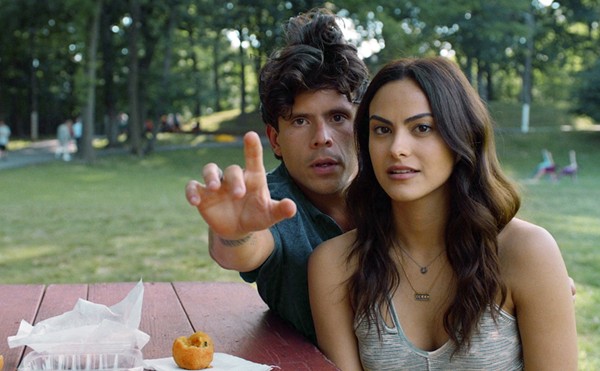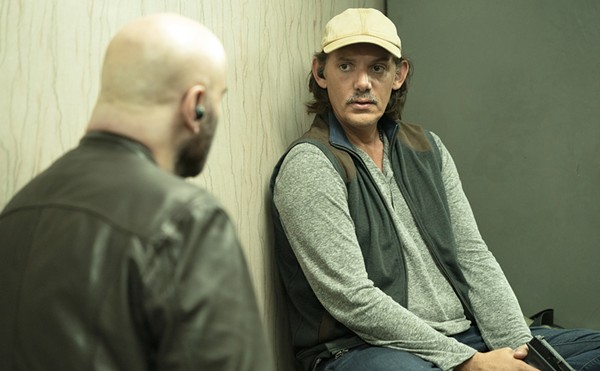Libby, Montana screening
Free
7pm Fri, Jul 16
SAY Sí
1518 S. Alamo
(210) 212-8666
saysi.org
Writing Treatments for Documentaries Workshop
$81
Noon Sat, Jul 17
Register by Fri, Jul 16
Gemini Ink
513 S. Presa
(210) 734-9673
geminiink.org
Doug Hawes-Davis made his first documentary in 1992 with a borrowed camera and zero film experience. “The Element of Doom,” a half-hour exposé on the damage a mining operation did to the wilderness of southeast Missouri, was the first of 25 films Hawes-Davis’s High Plains Films has released in the past 18 years. The production company he founded with fellow filmmaker Drury Gunn Carr has won more than 40 awards, and its films, such as the feature-length Libby, Montana, have been broadcast on PBS. On Saturday, July 17, Hawes-Davis will conduct a four-hour workshop on writing treatments for documentaries as part of Gemini Ink’s Summer Literary Festival. The cost to attend is $81, and registration ends Wednesday. Gemini and Say Sí will be hosting a free screening of Libby, Montana on Friday, and Hawes-Davis will be present to answer questions afterward.
Is the treatment always the first step?
Not necessarily. Many times people will just start shooting. But I think what we’ve discovered over the years is that doing a treatment — which is normally required to get financing — is a worthy endeavor for the film because it helps you clarify your own thoughts about what you’re trying to do. … Somebody might just decide they have to go shoot something and they’re going to make a film and they’re just going to start doing it. We’ve definitely been known to do that before we start writing anything down. Maybe it’s putting the cart before the horse, I’m not sure.
You didn’t have financing for your first film. Did you write a treatment anyway?
It’s not really that much of a movie. It was a short documentary I did using the community-access station’s borrowed camera.
I pretty much just started shooting. In that particular case I wasn’t a filmmaker at that time at all. I just knew something about the subject, and I thought it would be a worthy subject to film. Our community’s lucky enough to have community-access television where pretty much anybody can go there and get trained on how to use the equipment and how to edit and whatnot.
I’ve read some filmmakers suggest writing a full shooting script beforehand, describing shots and even guessing what interview subjects might say.
That’s kind of what a treatment is. … It’s your vision of what the film’s going to be, and you don’t have to have shot any images at all before you start writing that, so you may actually write down, “This character’s going to say this.” And many good treatments will do just that. They’ll literally make up lines for people that they plan to interview in real life. Essentially it’s giving somebody an idea of what the filmmaker hopes the film will be like when it’s done.
What’s interesting though, we wrote a treatment for a film where we didn’t even know anybody who was going to be in it. We knew what kind of people we thought would be in it, and I remember it was the first time I was just sort of shocked at how, wow, people said exactly what we thought they were going to say. And other times it won’t work out that way. I mean, your whole story can change from the treatment on certain occasions, and you’ve got to be open to the idea that your story’s not exactly what you think it is, too.
How important is editing in a documentary? It seems like it might be an even bigger deal than it is on a fictional film.
All of the roles are important, but perhaps the editor is most important when there wasn’t a good focus. You’re now really relying on the editor to figure out if there’s a story in here, and I think that does happen quite a lot in documentary. People have a good idea, there’s a subject they want to pursue, but they haven’t really thought about the treatment, which is why we’re doing this course. They haven’t thought about how they’re going to translate this issue or this thing they’re interested in into a film that’s going to be artistic and that people want to watch. All they’ve thought about is, “Here’s the subject. I’m going to document it.” The treatment should really tell you, “This is how we’re going to render this artistically. This is what it’s going to look like.” That’s what a treatment is. •
Libby, Montana screening
Free
7pm Fri, Jul 16
SAY Sí
1518 S. Alamo
(210) 212-8666
saysi.org
Writing Treatments for Documentaries Workshop
$81
Noon Sat, Jul 17
Register by Fri, Jul 16
Gemini Ink
513 S. Presa
(210) 734-9673
geminiink.org

Since 1986, the SA Current has served as the free, independent voice of San Antonio, and we want to keep it that way.
Becoming an SA Current Supporter for as little as $5 a month allows us to continue offering readers access to our coverage of local news, food, nightlife, events, and culture with no paywalls.
Subscribe now to get the latest news delivered right to your inbox.






